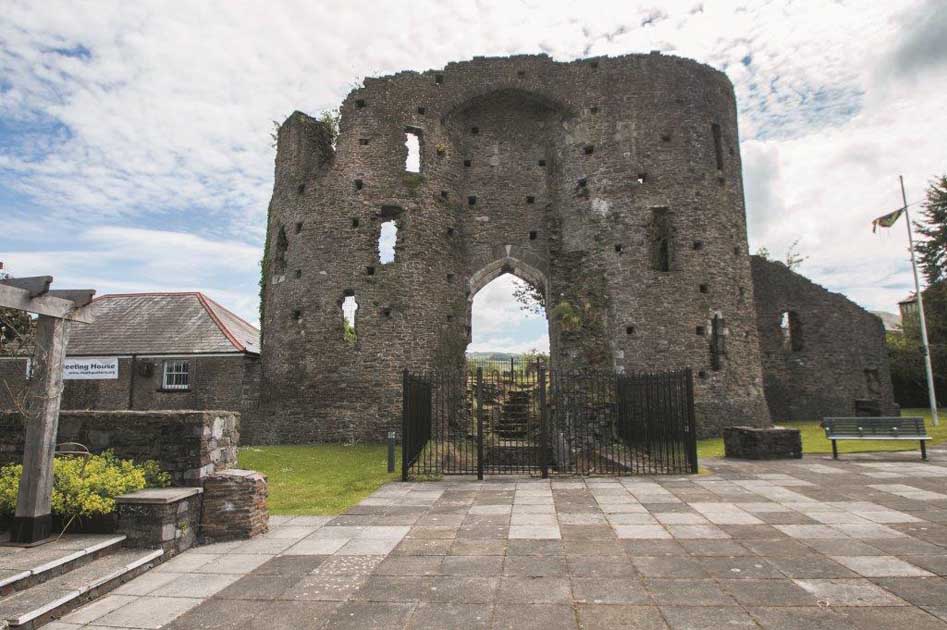Neath Castle

Neath Castle Details
Neath Castle, ruins of C12-13 castle of Earls of Gloucester abandoned C17
- Closest To: Neath
- Access: No Access
- Grid Reference: SS754978
Neath Castle is a ruined 13th century castle set within publicly accessible grounds within the town of Neath, although when I visited it was fenced off for safety reasons. The castle is situated close to an important crossing point of the River Neath, and on the east bank near to the modern town centre, although it is directly opposite the site of the Roman fort of Nidum and the Cistercian abbey.
The first castle of Neath was founded c1130 by Richard de Granville, one of the knightly followers of Robert fitzRoy Earl of Gloucester, as one of the principal satellite castles of the expanding lordship of Glamorgan, and was presumably established as a ringwork with bailey along with a plantation burgh, which was granted a charter by fitzRoy’s son William in 1147. Although it is often suggested Granvilles castle was on the west bank, there is no real evidence supporting this, and the burgh must have been founded on the same side of the river as the castle. Neath Castle was besieged by the Welsh upon William’s death in 1183, and although the siege was lifted the following summer when the Earl of Chester brought reinforcements, the castle may have been damaged as it was described in 1207 as having “formerly existed” in a confirmation charter to the abbey, and repairs were authorised by King John, who visited in 1210. It was, however, rebuilt and was successfully besieged again in 1231, when Llywelyn ab Iorwerth of Gwynedd led the army and caused the castle to be sacked. The rebuilding work appears to have been done in stone for the first time at about this date, and the D-shaped plan of the castle with two mural towers dates from the mid 13th century, along with what was probably a rectangular gate tower to the south facing the town and bailey.
This structure was strong enough to hold out against a Welsh attack in 1244 and a more serious one in 1258, when 150 houses in the town were burned at the instruction of Llywelyn ap Gruffudd of Gwynedd. During the Welsh wars of Edward I, Neath was not involved, and by the time Earl Gilbert de Clare (II) died in 1295 it was still in good order, and able to repel attacks by Welsh rebels in 1314 and 1316. However, in 1321 Earl Humphrey de Bohun stormed and burned the castle as it was held by the Despensers, who were hated by many of the nobility. In 1322 Edward II authorised payments to Despenser in order to repair the castle, and this resulted in the creation of the twin-towered gatehouse that is the most impressive standing part of the castle today, on the site of the old postern gate to the river, incorporating one of the old mural towers. The castle was looted in 1326 when King Edward was suffering another rebellion against the Despensers, and it may be that he had stored part of his treasury here. It remained in good repair throughout the rest of the 14th and 15th centuries, seeing little action, although the constable was murdered on suspicion of sleeping with another man’s wife in 1483. It was then allowed to decline through the 16th century, and fall into ruin.
Become a supporter of my work to access a more detailed history